Latest News On Tariffs In Life Sciences

The latest news on tariffs in life sciences reveals rising costs, policy risks, and innovation threats. Here’s what executives must know, and do, to stay ahead.
Tariff Exemptions in Life Sciences – A Closer Look at the April 2025 Update

🚨 Tariff Exemptions in Life Sciences
❌ Trade policy is failing U.S. pharma & biotech manufacturing.
✅ 60% of pharma inputs & medicines are now tariff-exempt.
❌ But when considering the entire life sciences industry, that number drops to 40%.
🔻 What’s missing?
❌ Medical devices are NOT included.
❌ Manufacturing equipment (CAPEX) is still taxed.
❌ Key biomanufacturing consumables face tariffs.
💡 The biggest contradiction?
Trump’s administration says it wants to “re-arm” U.S. industry—but tariffs still apply to the equipment needed to manufacture medicines here.
👉 How can companies bring production back if CAPEX remains expensive?
📢 What needs to change?
🔹 Exempt medical devices & biotech consumables.
🔹 Eliminate CAPEX tariffs to allow true reshoring.
🔹 Create a comprehensive trade policy for ALL life sciences.
Right now, this isn’t an industrial revival—it’s a half measure.
Licensing Agreements In Life Sciences Amidst Trade Wars and Regulatory Shifts

The Great Rollback is disrupting licensing agreements in life sciences as trade wars and regulatory fragmentation create uncertainty. FDA instability is delaying approvals, causing licensing disputes, while U.S. export controls are forcing European biotechs to reconsider partnerships. To mitigate risks, companies are embedding ‘trade war triggers’ and arbitration clauses in agreements. Meanwhile, the EMA’s regulatory stability offers a strategic advantage, enabling U.S. and Chinese firms to prioritize Europe for faster approvals and market entry. The future of licensing will depend on adaptability, geopolitical foresight, and leveraging EMA’s reliability.
Tariff War In Life Sciences: How to Manage Customs Risks and Costs

The U.S.-EU tariff war is raising costs and tightening customs scrutiny for pharmaceuticals, medical devices, and IMPs. With 25% tariffs on exports, companies can no longer rely on nil-value declarations for clinical trial shipments, risking higher costs, delays, and compliance issues. To navigate this, firms must adopt ERP-driven customs management, ensuring accurate HTS classification, tariff tracking, and duty mitigation to protect supply chains and control costs.
Mastering Licensing Agreements Financial Management for Life Sciences Success

Effective financial management of licensing agreements is crucial for small and mid-tier life sciences companies, as these agreements provide essential funding and strategic collaboration opportunities. To navigate the complexities of licensing, companies should adopt best practices such as aligning milestone payments with key value-driving events like clinical trial successes, tailoring royalty structures to market realities through tiered models, and leveraging modern ERP systems. These systems offer integrated project management and real-time tracking of milestones and costs, enhancing transparency and efficiency. By implementing these strategies and utilizing advanced financial tools, companies can foster innovation, mitigate risks, and build partnerships that drive the development of life-changing therapies.
Is Finance The Weak Link in Biotech Innovation?

In 2025, financial innovation is pivotal for small and mid-tier life sciences companies aiming to navigate complex licensing agreements effectively. Implementing modern Enterprise Resource Planning (ERP) systems is essential, as they centralize data, automate tasks, and integrate AI capabilities, thereby enhancing financial operations. By adopting best practices and leveraging technology, companies can build partnerships that foster innovation, mitigate risks, and deliver life-changing therapies to patients worldwide.
Poor Cash Flow Reporting Holds Back Life Sciences Innovation

Finance teams in small to mid-cap pharma and biotech face complex cash flow management issues under both US GAAP and IFRS. Cash flow statements often reveal a troubling gap: they lack the actionable insights needed for strategic decisions. In an industry where every dollar counts, failing to address these limitations jeopardizes a company’s financial agility and its survival. Major pain points include the pressure to classify cash flows accurately as operating, investing, or financing activities, and the added complexity of foreign currency transactions due to fluctuating exchange rates. Mergers and acquisitions further complicate reporting, requiring precision in separating acquisition-related expenses and liabilities. Additionally, transactions like contingent considerations and stock compensation arrangements bring unique challenges in presenting clear and accurate cash flows, often leading to confusion and restatements.
The Value of Your Company Unveiled Thanks to Modern ERP Financial Reporting

In small and mid-cap life sciences companies, finance teams are stuck in legacy accounting practices that stifle innovation. Bloated Excel sheets, convoluted explanations, and feedback loops that feel more like interrogations leave R&D teams frustrated and distracted. These outdated processes don’t just waste time—they erode the value of R&D itself. It’s time for non-finance leaders to demand streamlined, transparent tools that support growth, not block it.
As a result, the journey from lab to market hinges on the seamless integration of R&D with strategic financial oversight.
Below, we explore why CFOs – and stakeholders – must rethink their approach, replacing outdated methods with more modern and integrated solutions to protect and amplify R&D success.
Outdated Accounting Practices Hold Back R&D Success

In small and mid-sized life sciences companies, outdated accounting methods in finance are causing more harm than meets the eye. Legacy systems—marked by complex Excel spreadsheets and lengthy feedback loops—are overwhelming R&D teams. These inefficient practices waste time and drain the value of R&D, leading to delays in innovation. It’s time for non-finance leaders to push for streamlined, transparent accounting tools that drive progress rather than hinder it. The path from lab to market depends on integrating R&D with modern, strategic financial oversight. CFOs and stakeholders must embrace up-to-date, integrated solutions to secure R&D success and company growth.
Outdated Accounting Processes Hinder Revenue Recognition Efficiency

Outdated accounting processes in small and mid-sized life sciences companies significantly hinder revenue recognition efficiency. Reliance on legacy systems and manual methods leads to inaccuracies and delays, especially when scaling operations. To address these challenges, companies should modernize their financial processes by implementing advanced ERP systems and adopting automation. These changes will improve accuracy, efficiency, and scalability, ensuring compliance with revenue recognition standards like ASU 2014-09 and IFRS 15. By upgrading systems, companies can streamline revenue recognition, ensure compliance, and drive growth. 
Shipping IMPs for Clinical Trials in Europe: Best Practices

Shipping Investigational Medicinal Products (IMPs) for clinical trials in Europe is a critical yet complex process. IMPs, being unapproved drugs used in clinical trials or Early Access Programs (EAPs), require meticulous handling to navigate customs regulations, value-added taxes (VAT), and specific local requirements. Common mistakes in this process can lead to significant delays and increased costs. To avoid these pitfalls, it’s essential to understand and adhere to best practices, ensuring compliance and efficiency in the supply chain. For a comprehensive guide on these practices, refer to the full article.
Future Tax Policy for Digital Economy

The digitalization of the economy remains an important tax challenge and was identified as an area of focus of the Base Erosion and Profit Shifting (BEPS) Action Plan. With the objective to change the actual profit allocation rules for digital companies two Pillars were identified: Grouped under an Inclusive Framework (“IF”), the Program of Work (“PoW”) was initiated in May 2019 by the G20 ministers jointly with the OECD. Following several revisions, the IF and OECD adopted a consensus based solution on Pillar One: the “Unified Approach”. On January 31, 2020, the OECD endorsed the Pillar One and approved to negotiate its principles under the Unified Approach which is intended to be finalized by 2020. The proposal would have to be adopted by the G20 before getting implemented in the various jurisdictions. The concept is to design a solution that attracts support from all members of the Inclusive Framework. The Secretariat’s proposal for a “Unified Approach” has been developed with this goal in mind. Key features of a solution, which would include the following: Scope. New Nexus. New Profit Allocation Rule going beyond the Arm’s Length Principle. Increased Tax Certainty delivered via a Three Tier Mechanism. To summarize, reaching a consensus amongst 137 countries participating in the IF is a great challenge, but the IF has already shown a huge determination in bringing the Unified Approach in such short notice. In an ever evolving landscape of regulations*, we recommend multinational companies to develop contingency plans, change scenarios and implementation without delay. For further information: simon.massel@lifescienceservices.ch Source: http://www.oecd.org/ *US GOP Tax Reform, the EU Anti-Tax Avoidance Directives (“ATAD I” and “ATAD II”), BEPS Action Plans, Pillars One and Two
Tax opportunities post COVID-19

With the sudden appearance of COVID-19, many businesses encounter tough and violent challenges as shut down with a loss of revenue and removal of production capacity. The preservation of the EBIT and especially the cash is critical. Therefore companies should focus on completing their 2019 tax credits on R&D might help to obtain cash refunds from the governments. As part of the various public states measures, urgent tax incentives have been introduced such as: Such measures may lead several countries to raise their tax rates and tax conditions in the coming years. The world post COVID-19 remains uncertain and companies may rethink their value chain process by using tax design to improve their bottom line results. Opportunities 1. Transfer pricing activity reorganization In context of an economic downturn, tax-group reorganization is more favourable as it triggers lower valuation in respect of transfer of business activities, goodwill, Intellectual Property (IP). Restructuring allows to benefit from the negative context to redesign the transfer pricing group policy by calibrating the benchmarks and efficiently re-streamline the generation of the value added creation in more tax efficient locations. In addition, tax losses generated during 2020 might be optimally utilized to reduce the exit tax impact. 2. Revisit of existing transfer pricing flows The negative economic context offers possibilities to recalibrate the transfer pricing remuneration by streamlining the benchmarks. This may decrease the net income of the group subject to corporate tax in the various jurisdictions. 3. CFC – Controlled Foreign Company rules. Group subject to CFC rules may also benefit from a favourable re-design in term of shareholding. Reorganizing the shareholding flows as well as the adequate level of substance might allow to minimize and optimize the negative impact of these rules. As a conclusion, the world post COVID-19, remains uncertain and companies may take this opportunity to rethink their value chain process by using tax design to improve their bottom line results. It is the right to elaborate a tax risk-benefit assessment. Please feel free to contact us for more information. Simon Massel
What will impact the CFOs lifes in 2018?

As world is accelerating, every year faster, to more digital and all-service economy, 2018 will be a pivotal year for the finance function. You may have read similar comments in the past years, but you have not seen many changes in the finance functions. You still: Is this your budgeting process? If yes, I am afraid to inform you that you missed the train… However, 2018 is the perfect year to catch up. You believe that only “digital companies” are concerned by new laws and directives and as you run a traditional business it does not apply to your company. Once again, I am afraid to inform you that every company is a technology company now. You are not convinced? Please answer the following questions: If you answered “yes” to any of the questions above it means that your company is a technology company, at least in the opinion of the OECD and your country tax department. Hereafter we will present you what topics we foresee as game changers in 2018, with their risks and opportunities: Cloud Technology savvy people will think that “the Cloud” is no longer a disruptive technology. It is a false statement for the finance function. Planning, budgeting and forecasting (PBF) is widely out of scope when companies move to the cloud: only 10-15% of companies have moved PBF to cloud based solutions. The reasons for such a low conversion to the Cloud are numerous but the most common are: Whilst companies which have moved PBF to the cloud report the following benefits: What are the risks if your company does not migrate the PBF (and other functions) to cloud based solutions: To summarize, the first step in modernizing the finance function is to move the operations to the cloud but make sure you implement the adequate processes, rather than copy/paste your current processes. Blockchain Blockchain is the foundation of crypto-currencies such as the Bitcoin. The Wikipedia definition of blockchain: “it is a continuously growing list of records, called blocks, which are linked and secured using cryptography. Each block typically contains a hash pointer as a link to a previous block, a timestamp and transaction data. By design, blockchains are inherently resistant to modification of the data.” We often read terms such as “the supply chain blockchain” or the “finance blockchain”. In fact, Supply Chain and Finance are blocks linked to the same list of records. To summarize, blockchain is your product/service/transaction DNA, or genetic code. Why should CFOs consider adopting blockchain technologies? In addition to the business and finance partners pressure, the benefits of adopting the blockchain technology are: Of course, adopting such an early technology has it risks, and pursuing a full integration of blockchain could be very expensive to early adopters: To summarize, auditors perceive the blockchain ledgers to have the potential to solve the problems associated with standardisation, reliability and compliance. The fact that blockchain has received the confidence of all major financial institutions (banks, insurances, VCs) may force corporations in the need of funding to adopt it. In our opinion, it is difficult to predict exactly how huge the impact of the blockchain will be on the finance function. Artificial Intelligence (AI) AI and blockchain are inseparable. However, unlike blockchain, AI is perceived as a threat to the finance function: Natural language processing (NLP) and Robotic process automation (RPA) are concepts which are already being tested by Big4 companies. Big4 are already playing the game of men versus machines. RPA technology is being compared and benchmarked versus human brains. They use comparative methods to fine tune machines conclusions using human thinking. In the meantime, NLP is used to fill in hundreds of thousands of standard documents such as leasing contracts. Contracts are reviewed by real persons using the same sample criteria as any financial audit. Big4 companies can afford the luxury to test and roll out these technologies while having clients paying them for what is a massive UAT (user acceptance testing). In the short term (1-2 years), we do not recommend to CFOs to go on the direction of AI. We would rather recommend investing in cloud and blockchain solutions. ROI to implement AI technologies could be fast, but only for companies treating huge amount of transactions in millions. In the mid-term (3-5 years) we believe that AI technologies will play a significant role in fraud detection: if audits used to be based on samples, AI technologies will be able to review entire blocks of data downstream and upstream. As an example, AI technologies will recognize a fraudulent payment to a party under Anti-bribery and/or FCPA regulations. In addition, travel expenses will no more be a hassle for the accounting teams: NLP technologies will be able to code and process any expense claim, in line with the company travel policy with milliseconds! Our conclusion about AI is that it will simplify the world of finance and translate complex transactions into comprehensive steps. We don’t see AI as a threat to the finance function but as a perfect tool to support decision making by providing unquestionable proof of concept. Stay tuned for the next article. About the author: Rui M. Teixeira is a finance professional with over 20 years’ experience including 10 as independent management Consultant. The objectives of his articles are to share his professional experiences and feelings about the professional world. Disclaimer Unlike Big4, large consultancy firms and the EU Commission, our company does not have dedicated resources to research and investigate about the current trends which impact the world of business. You will understand that we do not openly share our sources. However, if there is a piece of information for which you would like to see the source/reference or to further discuss it, please do not hesitate to contact us specifying what paragraph you are looking for.
